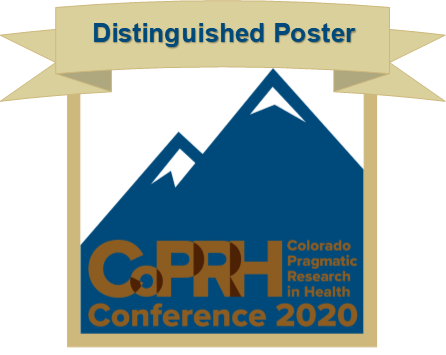Join us as this presenter discusses this poster live on Tuesday, August 11, 2020 | Track D at 5:15 PM Mountain

PRESENTER
SARABETH BRODER-FINGERT, MD MPH,
Assistant Professor, Boston University
Assistant Professor, Boston University
BACKGROUND
In 2014, the NIMH’s Autism Spectrum Disorder Pediatric, Early Detection, Engagement and Services (ASD PEDS) Network was formed to develop and test systems innovations that rapidly engage young children with ASD in diagnostic and treatment services1. Five studies across nine states were funded, each testing a different model of care (i.e., family navigation, enhanced community identification, enhanced primary care identification, online screening and identification with provider training, identification in Part C early intervention). The current paper represents an effort to learn from the collective experience of the five diverse ASD PEDS Network projects. Specifically, we evaluate where each study falls on the pragmatic (i.e., “real-world”) to explanatory (i.e., “ideal condition”) continuum in order to inform future implementation efforts and identify research priorities for early ASD identification and intervention services.
METHODS
The Pragmatic Explanatory Continuum Indicator Summary–2 (PRECIS-2) was used to assess the five ASD PEDS Network studies2. First, investigator teams from each study completed the Template for Intervention Description and Replication (TIDieR) checklist for their specific study3. Second, a group of independent reviewers with expertise in community ASD services and trial design (n=3) reviewed the checklists and rated each study on the nine PRECIS constructs (i.e., eligibility, recruitment, setting, organization, delivery, adherence, follow-up, outcomes, analysis) from 1 (most “explanatory”) to 5 (most “pragmatic”). Third, a modified Delphi approach was used to reach agreement for each study in each domain.
RESULTS
The domains rated as most pragmatic (i.e., most reflective of usual care) were those measuring the inclusiveness of data in the analyses (M= 5.0, SD=0) and the flexibility allowed in providers’ adherence to the intervention protocol (M=4.34, SD=1.19). Domains rated as most explanatory (i.e., least reflective of usual care) included the time and effort devoted to follow-up data collection (M=2.23, SD=0.66) and the resources and expertise needed to deliver the intervention (M=2.32, SD=0.81).
DISCUSSION
Overall, there was considerable variability across ASD PEDS Network studies and PRECIS-2 domains. The least pragmatic aspects of these studies were the settings in which they were conducted and the manner in which outcome data were collected, suggesting that these areas may pose particular challenges for community-based trials focused on early detection and service access for ASD. To achieve the goal of increasing pragmatic research trials and “real-world” applicability for ASD research, future research might benefit from using the PRECIS-2 during initial trial design, developing more pragmatic outcome measures, and improving methods for integration of research into “real-world” settings.
POSTER
